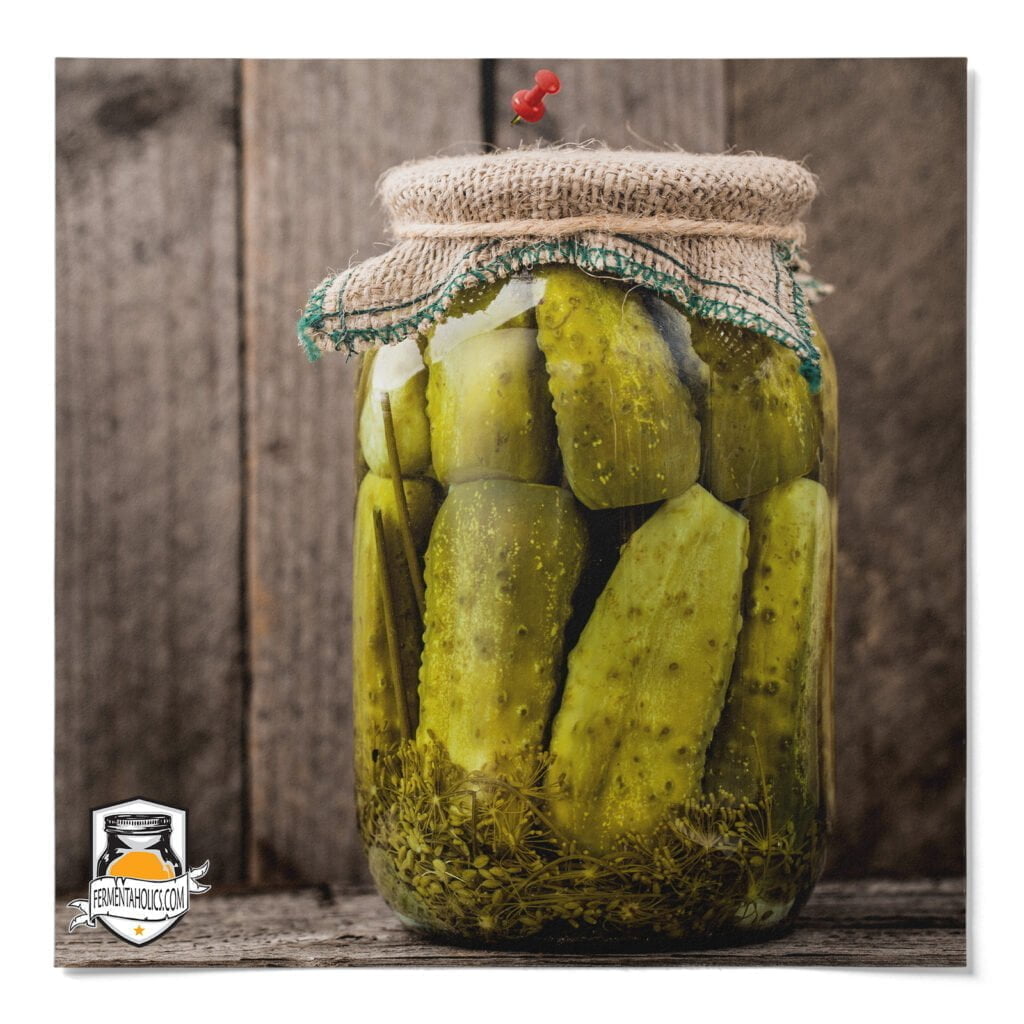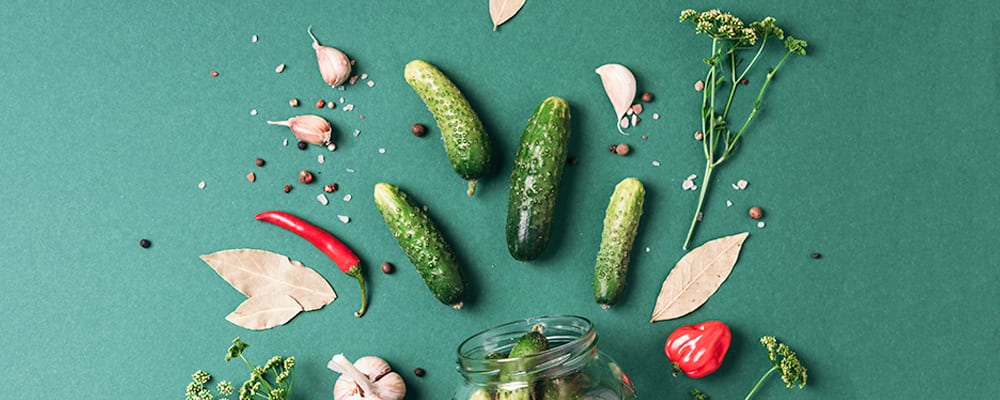
Not only do pickles look great next to a burger and fries, but they are also great for your health! Fermented foods like pickles are full of health benefits and probiotics. As pickles are the side dish, snack, and burger topping that we all know and love, we have found that it is a great source of probiotics such as lactic acid bacteria which are linked with many health benefits. Pickles are also great for replenishing electrolytes and boosting your hydration because of the amount of water and salt that is in the pickling mixture.
The word “pickle” comes from the Dutch term pekel, which means brine. You can pickle just about anything when you preserve it in a pickling liquid or brine- but today we are going to be focusing on pickling cucumbers, AKA pickles! There are two main types of brine for pickles, vinegar-based, and salt-based. This recipe is based on a vinegar-based brine, which is quick, easy, and flavorful making it an amazing option for beginners in small-batch pickling.

Known for the vinegary bite and crunchy texture it creates in foods, the vinegar pickling process is an international delicacy. Whether it’s pickled red onions on taco night or a crunchy sliced dill on your bacon cheeseburger, pickled foods add a texture and flavor that leads to delicious bite after delicious bite. The great thing with vinegar pickling is how easy and simple the process is: salt, time, and an acidic solution (i.e., vinegar) are all you need to make staple classics from many different global cuisines. The basics always work, though there are classic recipes and blends you can use to impart extraordinary flavors on your foods, like our Perfect Pickle Pickling Spice.
Sometimes referred to as quick pickling, the most important aspect of this process is the vinegar and its five percent acidity: this is what creates the changes in flavor and texture and preserves the food. Many believe vinegar pickling is a form of fermentation, but it all depends on your process and ingredients. To learn more about the science behind pickling and fermentation, check out our article: Are Pickles Fermented? For your pickling vinegar, distilled white vinegar and white wine vinegar are two popular choices, but there are many options you can use, all depending on what flavor, texture, and even color you are looking to create. Once you’ve selected your vinegar, check out our Vinegar Pickling Kit for the perfect setup and everything you need to start pickling today.
32 Oz Jar
15
Minutes24
HoursThis Classic Dill Pickle recipe is for one 32 oz jar. For a larger batch, scale this recipe by multiplying the ingredients or toggle the serving size above.
1 TBSP Pink Himalayan Salt
1 TBSP Perfect Pickle Spice Blend
1 TBSP Sugar (Optional)
1.5 Cups Filtered Water
1 Cup Distilled White Vinegar
1/2 Cup Packed Fresh Dill
4-8 Cloves Garlic, Peeled And Smashed
2 LBs Cucumber, Cut To Desired Shape (Chips, Spears, Long Thin Slices, Etc.)
1 Quart Mason Jar
1 Small Saucepan
Bring water, vinegar, salt, pickling spices, and sugar to a boil in a small saucepan.
Remove from heat, stir to dissolve the sugar and salt, then allow to cool.
Pack the cucumbers, garlic, and dill into the jar. Pour pickling liquid into the jar to cover the vegetables.
Put the lid on the jar and place it in the refrigerator for 24 hours before enjoying it.
